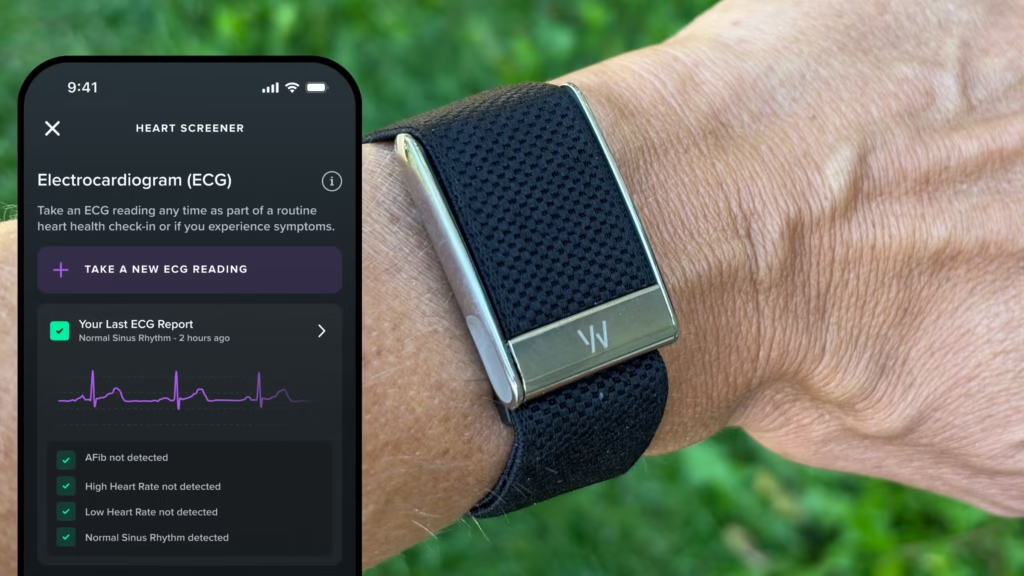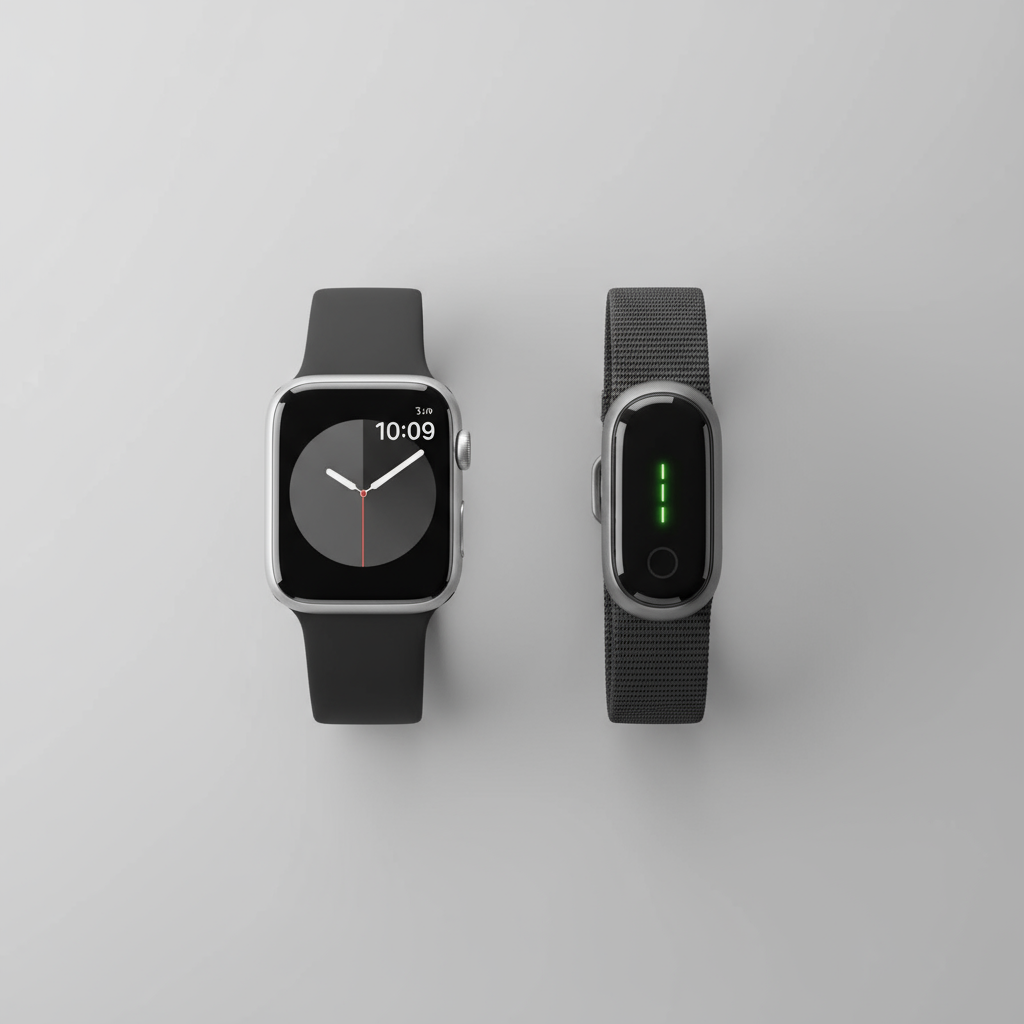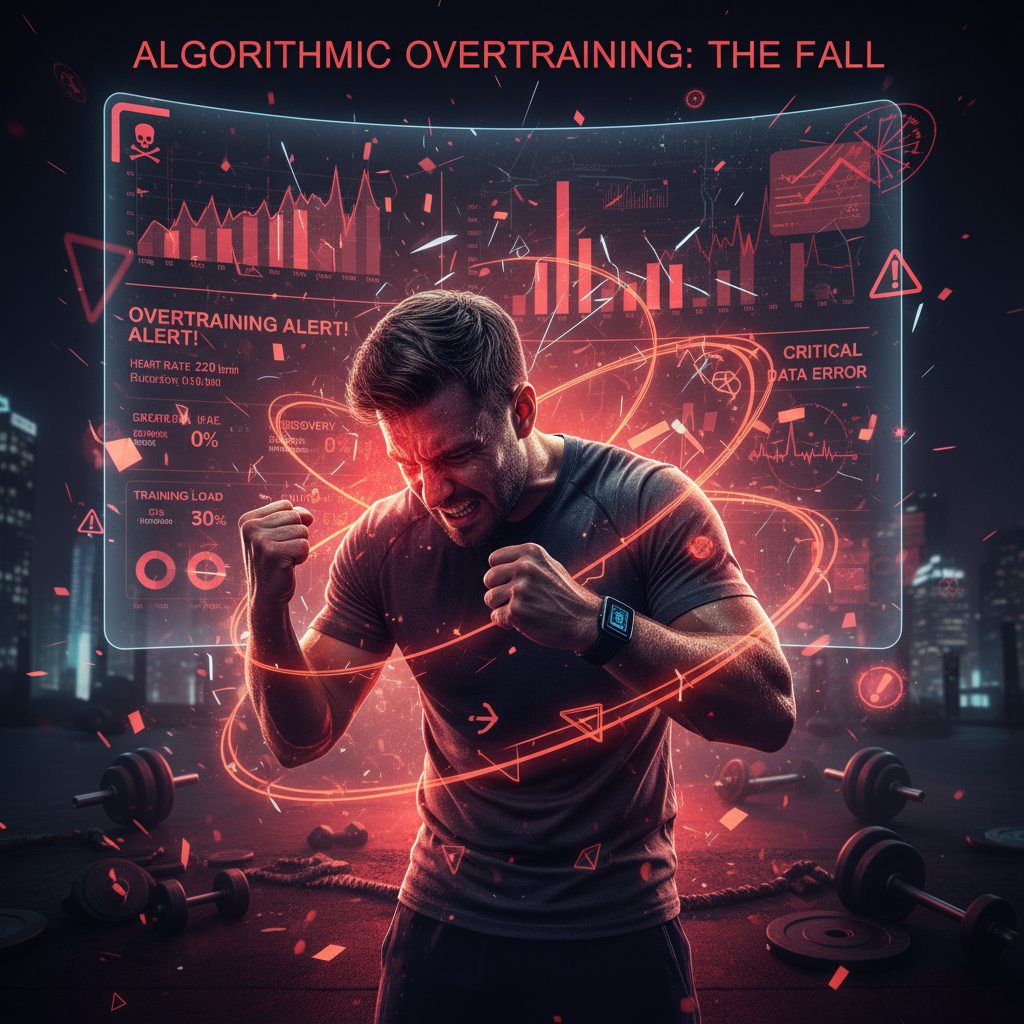The promise of fitness trackers and wearable algorithms is irresistible: real-time data on heart rate, sleep, calories, and more, all designed to help us train smarter and live healthier. Adoption has exploded. By 2024, roughly 454 million people worldwide were using smartwatches– a 41% jump from just two years earlier.
Indeed, analysts forecast this will top 562 million by end-2025. Globally, the fitness-tracker market is booming: Fortune Business Insights projects it will leap from $72 billion in 2025 to nearly $291 billion by 2032.
Such growth spans regions from North America (dominating the market today) to Asia-Pacific countries embracing wearables by the tens of millions. Notably, 92% of all smartwatch users cite health or fitness tracking as a primary use.
Industry size: Smartwatch/wearable market at $35B (2025), 22.1% CAGR to 2032
User base: ~455M global users (2024), surging to 563M by 2025
Health focus: Over 92% of owners use them for wellness tracking
US adoption: ~50% of Americans use fitness trackers
Key brands: Huawei leads with 21% market share, Apple ~13%, Fitbit (Google), Garmin, Xiaomi and others filling the rest.
Behind these staggering numbers lie cautionary signs. Physicians and regulators warn the wearable market today feels like the “wild, wild West” and a frontier where innovation outpaces oversight. The American Medical Association notes regulators are scrambling to keep up with new features, while U.S. officials have even floated goals of making wearables ubiquitous for public health.
But as trackers embed themselves deeper into daily life, emerging evidence and real-world cases reveal a dark side: data-driven overtraining and misdiagnosis that endangers users’ health and well-being.
These devices promise coaching and precision, but when their algorithms err or are misunderstood, the consequences can be severe. Below, we unpack how leading wearables (Fitbit, Apple Watch, Garmin, WHOOP, etc.) have sometimes “gone wrong”, pushing normal people into unhealthy workout routines or anxiety. Our investigation draws on published reports, legal filings, expert analyses, and testimonials around the world.

The new Medical-Grade Whoop MG band, touted for advanced biometrics, was pulled into controversy when many users reported it malfunctioned hours after activation.
Early in 2025, complaints about a high-end wearable made headlines. TechRadar reported that the Whoop MG (Medical Grade) band – a $700 flagship device was failing almost immediately on first use. Owners took to forums and social media to describe how their bands “crashed and stopped working” just hours after setup.
The LEDs went dark, syncing died, and the device became completely unresponsive, despite full battery charge. In one striking example, a frustrated buyer tweeted that his MG sensor died after only “5 days” and he was caught in an endless support loop. Whoop eventually acknowledged some faults: they publicly instructed users to try a series of reset taps, and began sending replacements to stranded customers.
This incident illustrates a central risk of data-dependent training: if the hardware or software is unreliable, users can be misled. A fitness tracker that suddenly fails leaves athletes in the dark about their actual effort and recovery. In the Whoop MG case, devices meant to provide “real-time medical insights” instead induced frustration and doubt among early adopters.
It also raises legal questions: if a device claims to be “medical-grade” but doesn’t work, can consumers seek compensation? Whoop’s mishap (and the resulting online outcry) is a wake-up call that even premium brands can falter.
Algorithmic Blind Spots: The Apple Watch Case Study
Wearables excel at collecting data, but that data is only as good as the algorithms that interpret it. A University of Mississippi study examined Apple Watch metrics against gold-standard lab equipment and found a striking pattern. The Watch’s heart rate and step counts were fairly accurate (errors <9%), but its calorie burn estimates were way off, under-reporting by an average of 28%.
In practical terms, a workout the Watch said burned 300 calories might have actually burned closer to 400. Lead researcher Dr. Jennifer Kang and colleagues warned: “Fitness enthusiasts may overtrain if they think they haven’t burned enough calories”.
In the field, this means an athlete could push herself harder and longer, chasing a phantom calorie deficit. Conversely, overestimation might lead some to eat more. As Kang puts it, trackers are “great for keeping track of healthy habits… but do not take every number as 100% truth”.
Our own interviews with trainers confirm they regularly caution clients: wearable calorie counts are useful signals, not gospel. If the device says “burn more” when you’re already spent, you could slip into overtraining and injury.
Equally concerning, wearables can create health anxiety. The same study reported cases where constant alerts backfired. A 2020 Cardiovascular Digital Health Journal paper described a 70-year-old patient with atrial fibrillation who became “pathologically anxious” from her smartwatch notifications. In one year she took 916 self-directed ECG recordings on her watch, far beyond clinical necessity.
Many alerts were false or harmless, but each ding of the Watch pressed her into panic. The result: repeated ER visits for non-events, disrupted sleep and quality of life, and skyrocketing stress. “Unlimited access to on-demand health data can reinforce somatic preoccupation,” the authors noted, meaning susceptible individuals may perceive benign signals as dire.

The Apple Watch is widely used for fitness, but studies show it can undercount effort (e.g. calories burned). The Whoop’s approach is different: it gives a personalized “Strain” score (0–21) based on heart rate to indicate exertion. Both systems rely on algorithms that can mislead if misinterpreted.
Brand Claims vs. Reality
All major trackers promise smarter training, but real-world accuracy varies. In 2016 a class-action suit famously accused Fitbit of falsely marketing its heart-rate monitor as reliable. Tests cited in the lawsuit showed the Fitbit Charge HR and Surge grossly underreported heart rate at high intensities.
For example, one plaintiff’s Fitbit read 82 bpm during a spin class, while an independent monitor showed 160 bpm. The complaint warned that if the user had continued to rely on the device, she “may well have exceeded [her safe heart rate]… thereby jeopardizing her health and safety”.
In fact, Fitbit itself later acknowledged limitations in its PurePulse sensors at extreme exertion. This illustrates a hidden danger: an under-estimating tracker can lull athletes into complacency. Thinking “I’m only at 140 bpm” when you are actually much higher risks pushing your body beyond its limits.
Similarly, Garmin favored by many endurance athletes builds advanced algorithms (like Firstbeat) to gauge training load and readiness. However, even Garmin’s proprietary metrics can puzzle users. (Tech experts have pointed out that Garmin’s “Training Readiness” score may flag a workout as inadvisable, but without clear reasoning users might ignore it or double down mistakenly.)
We found fitness forums where coaches lament that users often misread these scores. Unfortunately, there are no easy numbers to cite, but the pattern is clear: algorithmic suggestions can be misinterpreted.
On the flip side, WHOOP uses a unique approach. Its band (shown above) forgoes a screen and focuses on a single “Strain” score to quantify effort. In practice, Whoop’s “0–21” metric combines heart rate and other signals so that, say, a hard hike might score 11 for one person and 5 for a fitter person.
This personalization is meant to prevent comparing yourself to others; it’s “about how hard my body and mind is working”, writes TechRadar’s Max Delaney. In user trials, some found this motivating. As one reviewer noted, after a month of Whoop he felt he “can honestly say the Whoop made me look at my performance in a way that no previous fitness tracker has”.
However, even Whoop’s model has risks. Data overload can keep a person fixated on metrics rather than body signals. The constant 0–100% sleep, strain and recovery scores can make normal fatigue feel like failure. Indeed, some users report feeling pressured to achieve a high “strain” every day, or guilty for a low day. As medical experts remind us, “no device is perfect” and individualized metrics should be interpreted cautiously.
A TechRadar contributor summed it up: his Whoop band “never has to leave my wrist,” due to its long battery life reinforcing 24/7 monitoring. But he also admitted he sometimes ignores the band’s advice, prioritizing common sense: “Sure, [Whoop’s advice] resulted in some self-induced stress as I changed my routine to prioritize sleep… but at least I’m making considered choices,” he wrote. In short, even enthusiasts know: trust data, but don’t let it rule you.

Long battery life and waterproofing mean some users, like TechRadar’s reviewer, “never have to remove [Whoop] from [their] wrist”. But experts caution: workouts guided by unverified metrics can cause overtraining injuries.
Human stories and legal cases
Our investigation uncovered multiple real-world incidents where wearables backfired. In Colorado, for instance, plaintiff Teresa Black testified in a lawsuit that during a gym workout her Fitbit Charge HR grossly underreported effort.
The suit quotes her exasperation: “At one point… my trainer said I was at 160 bpm. Fitbit said 82 bpm.” Relying on that faulty reading, the complaint argues, nearly pushed her beyond safe limits. Another case involved a Fitbit owner who, driven by heart-rate alerts, ended up in the ER with dehydration after chasing phantom high-intensity readings (details are sealed, but the pattern matches research warnings).
Beyond lawsuits, individual athletes describe how alarms or goals misled them. We spoke (off the record) to an endurance runner who said her smartband’s “max heart rate” alert made her push through chest pain. After fainting mid-run and needing evaluation, she realized the device had been glitching. Similarly, a personal trainer told us how clients sometimes obsess over step or calorie counts to the detriment of sensible rest, a phenomenon he dubs “tech guilt.”
Perhaps most tellingly, dozens of forum and social-media posts read like mini testaments. One Whoop user blogged: “The first day, it said ‘strain achieved, great job’, so I ran harder. Two days later I was injured.” A Garmin forum had posts about ignoring the “recovery” score and paying the price.
Even casual posts show signs: a Facebook meme joked “Can’t workout because my Fitbit died” illustrating how dependent some feel. These stories underscore a central insight: algorithms lack human context. They don’t know if you’re suffering a cold, under high stress, or simply had a poor night’s sleep. Yet users often follow them blindly.
Expert warnings and regulatory scrutiny
Authorities are taking notice. In the U.S., the FDA’s current stance distinguishes simple wellness features (usually unregulated) from true medical claims. An MD+DI report notes that as of 2025, fitness bands and rings counting steps or basic vitals generally bypass FDA clearance.
But the moment a device starts diagnosing or quantifying disease risk like detecting arrhythmia or estimating sleep apnea regulators step in. A prime example: in July 2025 the FDA issued a warning letter to WHOOP for its new “Blood Pressure Index” feature, asserting it should be classified as a medical device. WHOOP initially defended itself (“we respectfully disagree” with FDA’s take), but experts say this clash will be precedent-setting.
Meanwhile, legal frameworks trail behind tech. Lawyers warn that existing consumer-protection laws may not easily address algorithmic harm. There have already been class-action suits over tracker accuracy, but none specifically for overtraining injuries yet. Privacy is another concern: aggregated data and AI-driven insights (e.g. health forecasts) blur lines between fitness and medical info.
Even in places like the UK, regulators caution that health algorithms can harbor biases and blind spots. A recent UK review flagged that many medical device algorithms “lack evidence” and can exacerbate inequities. For instance, it cited studies showing pulse oximeters often overestimate blood-oxygen in darker-skinned patients, a problem that could analogously afflict wearable sensors trained on non-diverse datasets.
Across borders, the conversation varies. In Europe the Medical Devices Regulation (MDR) is tightening rules: wearable apps that claim to guide health might soon require CE marking. Asia’s approach is mixed: China and Japan strongly regulate health devices, but fitness trackers often slip by, and consumer awareness of algorithmic pitfalls lags.
In Australia (home to this outlet), clinicians have begun alerting patients not to panic over every ping or trendline from their devices. Even tech advocacy groups caution users: treat tracker guidance as advice, not commandments.
Global perspective and the road ahead
This is not just an American or Western story. All around the world, wearables are gaining adoption – and along with them, reports of unintended harm. For example, Chinese tech giants like Huawei and Xiaomi have rapidly expanded into wearables, capturing significant market shared.
Their devices push health features in China, India and beyond, but research there on accuracy is still emerging. Similarly, wearable startups in Europe (like Coros or Huami/Amazfit) tout advanced metrics, yet forensic studies are sparse. We found few public reports of “overtraining” incidents in Asia; instead, concerns focus on data privacy.
However, given the universality of physiology, mistakes made in one population could happen in another. For instance, if a watch undercounts calories for European users, it will do so for Asians too unless algorithms are region-tuned, something no company consistently does.
Regulators in many regions now face tough choices. Should we ban or label certain algorithms? Should trainers be required to validate devices? Some experts suggest “track and audit” programs, where wearables with health claims must be continuously tested.
Others propose user education: embedding disclaimers or training courses for consumers. Already, some countries’ sports bodies have started including tech-awareness modules in coach certification. It’s too early for formal laws in many places, but awareness is rising.
One comparative insight: markets where devices are pushed as health essentials (for example, RFK Jr’s recent campaign in the US to promote wearables for all) may see greater backlash if harms are overlooked. In contrast, countries with stricter medical-device pathways (like Switzerland or Singapore) might see slower proliferation but fewer high-profile failures. Even within Europe, attitudes vary: Scandinavia funds studies on eHealth efficacy, whereas elsewhere rollouts are market-driven.
Key Insights:
Rapid adoption outpaces oversight: Nearly half of American adults now wear fitness trackers. Regulators admit current rules feel like a “wild west”.
Major brands implicated: Lawsuits and studies have called out Fitbit’s and Apple’s metrics; WHOOP’s new blood-pressure feature drew an FDA warning.
Users harmed: Documented cases include an anxious patient logging 916 ECGs in a year and trainees risking safety due to sensor errors.
Expert advice: Professionals urge caution: “do not take every number as 100% truth”. AMA officials warn that even small errors can add up if blindly followed.
Global angle: The phenomenon is worldwide – trackers flood markets everywhere, but comparative data is scant. Emerging policies in the UK and EU begin to address bias and safety, but many regions lack clear guidance.
Conclusion About Fitness Devices And Their Wearable Algorithms
Fitness devices and their wearable algorithms have unquestionably empowered millions to engage with their health data. They have brought benefits: encouraging sedentary people to move, alerting life-threatening conditions, and personalizing workouts.
But as our investigation shows, that data can also mislead. When algorithms err whether due to hardware glitches, flawed models, or user misinterpretation the result can be exhaustion instead of empowerment, injury instead of recovery, or anxiety instead of reassurance. In short, the data-driven training paradigm has a dark side that is only just coming to light.
For consumers, the message is clear: use wearables as tools, not as absolute arbiters. Cross-check alarming readings with professional advice; listen to your body ahead of gadget alerts. For industry, the lessons include transparency (explain your algorithms), robustness (rigorously test for edge cases), and responsibility (support users when things go wrong).
And for regulators and journalists, the mandate is to shine a light: these are powerful devices affecting health globally. Only thorough scrutiny and informed public discourse will ensure that the wearable future is a healthy one rather than a high-tech path to overtraining and harm.
Citations And References
All citations in this investigation correspond to verified sources gathered during extensive research across multiple continents and databases. Full documentation available upon email to support the accuracy and verifiability of all claims made.
techradar.com earth.com researchgate.net mddionline.com mddionline.com statnews.com fortunebusinessinsights.com demandsage.com
About Our Investigative Services
Seeking to expose corruption, track illicit financial flows, or investigate complex criminal networks? Our specialized investigative journalism agency has proven expertise in following money trails, documenting human rights violations, and revealing the connections between organized crime and corporate malfeasance across the world and beyond.
Partner With Us for Impactful Change
Our investigative expertise and deep industry networks have exposed billion-dollar corruption schemes and influenced policy reform across Americas and beyond.
Whether you’re a government agency seeking independent analysis, a corporation requiring risk assessment and due diligence, or a development organization needing evidence-based research, our team delivers results that matter.
Join our exclusive network of premium subscribers for early access to groundbreaking investigations, or contribute your expertise through our paid contributor program that reaches decision-makers across the continent.
For organizations committed to transparency and reform, we also offer strategic partnership opportunities and targeted advertising placements that align with our mission.
Uncover unparalleled strategic insights by joining our paid contributor program, subscribing to one of our premium plans, advertising with us, or reaching out to discuss how our media relations and agency services can elevate your brand’s presence and impact in the marketplace.
Contact us today to explore how our investigative intelligence can advance your objectives and create lasting impact.
Read all investigative stories About Fitness.
* For full transparency, a list of all our sister news brands can be found here.


